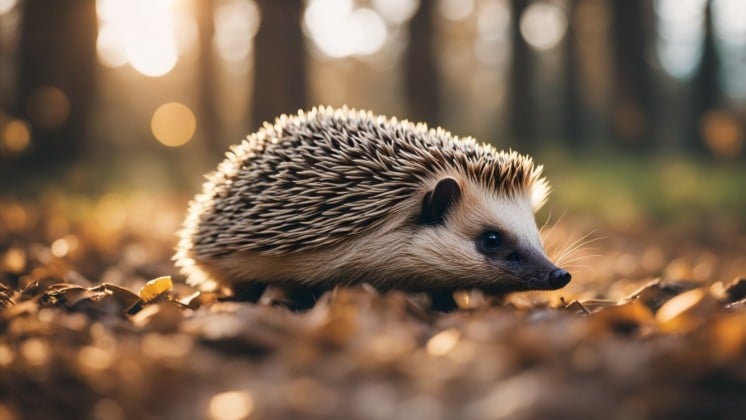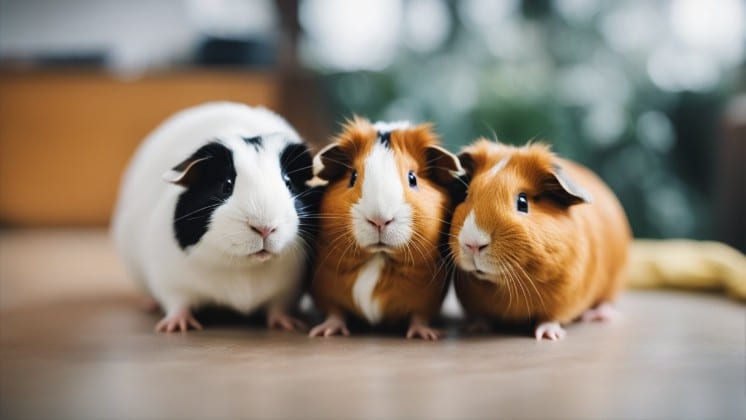Last day, I was sitting on my friend’s couch, watching TV, when she asked me a question that I didn’t know the answer to. Do chinchillas mate for life?
I had never even thought about it before, but I was curious to find out. So, I did research everything I could about chinchilla mating habits, and here is what I found out.
Chinchillas are not a monogamous species, meaning that they do not mate for life.
Like most animals, the males and females will typically come together during the breeding season. However, after mating, the male will generally move on, and the female will raise the young on her own.
Chinchillas are one of the most adorable creatures on the planet. They’re also quite interesting, and many people don’t know much about them.
In this article, we’ll explore some chinchilla facts, mating habits, how often chinchillas mate, when chinchillas stop having offspring, and how many offspring they can have.
Keep reading to learn more!
How often do chinchillas mate?
On average, chinchillas mate three times a year. However, some chinchillas may mate more often, while others may only mate once a year. If chinchillas are kept in groups, they will often mate more frequently.
When it comes to mating, chinchillas are not particularly picky and will mate with any willing partner. This lack of selectivity means that chinchillas can mate multiple times throughout the year.
In fact, it is not uncommon for a chinchilla to produce two or three litters in a single year. However, this high level of reproductive activity takes its toll on males, and as a result, they often have a shorter lifespan than females.
Nevertheless, the ability to mate frequently is one of the defining characteristics of the chinchilla species.
(source)
However, chinchillas can still produce offspring in their later years. It just becomes increasingly difficult as they age. Consequently, there is no definitive answer as to when chinchillas stop having offspring.
Some may continue to have litters into their teens, while others may only be able to produce one or two litters in their lifetime. Ultimately, it depends on the individual chinchilla.
Do chinchillas mate with siblings?
Chinchillas are closely related to guinea pigs and rabbits, and like these other rodents, they typically mate with non-siblings. In the wild, chinchillas live in large colonies where there is a high degree of social interaction.
This interaction helps to prevent inbreeding and ensures that genetic diversity is maintained. However, in captivity, chinchillas often do not have the same opportunity to socialize. As a result, they may become attracted to siblings or other close relatives.
While it is technically possible for chinchillas to mate with siblings, it is not recommended as it can lead to health problems for the offspring.
Inbreeding can also cause genetic defects that may be passed down from generation to generation.
For these reasons, it is best to keep chinchillas with other members of their species that are not closely related.
Do chinchillas need a mate?
Chinchillas are social animals that typically live in colonies in the wild. While they can live without the need for a mate, they prefer the company of other chinchillas and will often become lonely if left alone for extended periods of time.
In captivity, chinchillas should be kept in pairs or small groups in order to provide them with the social interaction they need. Without another chinchilla to socialize with, a pet chinchilla may become withdrawn and depressed.
In addition, two chinchillas will often groom each other and play together, which helps to keep them clean and healthy. For these reasons, it is generally recommended that chinchillas be kept with at least one other of their kind.
Note: if you do decide to keep more than one chinchilla, it is important to make sure that they are compatible.
Some chinchillas get along well together, while others may fight over food or territory.
It is best to introduce chinchillas slowly and carefully in order to give them time to get used to each other. Once they have been introduced, it is important to monitor their interactions to make sure that there is no aggression.
Especially during mating season, you might see some changes in your chinchilla behavior, such as increased vocalization and barking. During this time, you may not be able to hold your chinchilla as much.
In a recent article, I explain more in detail why your chinchilla won’t let you hold it during mating season.
Here I examined some of the most common reasons why chinchillas might not want to be picked up and what you can do about it to make feel your chinchilla feel more comfortable around you.
Chinchilla mating behavior
Chinchillas are also interesting creatures when it comes to mating behavior.
Unlike many other animals, female chinchillas will actually mate with multiple males. This is likely due to the fact that chinchilla litters are usually small, and the females want to increase their chances of producing offspring. Males, on the other hand, are much pickier when it comes to choosing a mate.
They will often engage in a type of courtship ritual in order to impress a potential mate. If successful, the male will then accompany the female to her burrow, where they will mate.
Afterward, the male will typically move on to another female, while the female will care for her young alone. This interesting mating behavior makes chinchillas fascinating creatures to observe.
Are chinchillas easy to breed?
Before we dive deep into this topic, it’s important to point out that responsible breeding is only for experienced chinchilla parents who are willing to find good homes for all of their offspring.
With that said, breeding chinchillas is not particularly difficult, but it does require some knowledge and preparation.
In fact, some breeders claim that chinchillas are easy to breed, while others find the process to be more challenging. The biggest difficulty seems to be finding two compatible chinchillas, as they can be very particular about their mates. Once a pair has been found, though, the actual process of breeding is not particularly complicated.
The first step is to make sure that you have a male and female chinchilla that are compatible with each other.
As we mentioned earlier, some chinchillas get along well together, while others may fight over food or territory.
It is best to introduce chinchillas slowly and carefully in order to give them time to get used to each other.
The next step is to prepare a nesting box for the female chinchilla.
This should be a small, enclosed space where she can build a nest and give birth in peace. Once the nesting box is prepared, you will need to wait for the female to go into heat.
This typically happens once every four to six weeks and is characterized by the female chinchilla becoming restless and agitated.
Once the female is in heat, she will be ready to mate. The male and female will then mate multiple times over the course of several days.
After mating, the male chinchilla should be removed from the enclosure and placed in a separate cage.
The gestation period for chinchillas is around 111 days, after which the female will give birth to a litter of two to six offspring.
The baby chinchillas, or “kits,” are born blind and deaf and are completely dependent on their mother for the first few weeks of life.
(source)
How long are chinchillas fertile?
Chinchillas are fertile for approximately four years. However, this does not mean that they will mate for life. Chinchillas typically have multiple mates throughout their lifetime.
That being said, female chinchillas can have their first litter of kittens at around six months of age, and they continue to produce litters for approximately two years after that.
However, after two years, the chinchilla’s fertility begins to decline, and by the age of five, she will no longer be able to reproduce. As a result, those who are interested in adopting a chinchilla should do so within the first two years of the animal’s life.
Can male and female chinchillas be kept together?
While male and female chinchillas can often live together without issue, there are some potential risks to consider. One of the biggest dangers is that the males may become too aggressive, particularly during mating season.
If the female is not ready to mate, the male may become overly forceful, leading to serious injury or even death. In addition, pregnant females may also be at risk from aggressive males.
For these reasons, it is generally advisable to keep chinchillas of different genders separate unless you are carefully monitoring their interactions.
However, if you do decide to keep them together, be sure to provide ample hiding places and plenty of food and water to reduce the risk of conflict.
How do I know if my chinchilla is pregnant?
There are a few key signs that may indicate that your chinchilla is pregnant. First, you will notice that her belly will start to swell as the kits develop. Additionally, she may become moody and less interested in play.
She may also start nesting, which involves collecting bedding material in her cage and arranging it to her liking. If you suspect that your chinchilla is pregnant, it is important to take her to the vet for a confirmatory ultrasound.
Final thoughts
In this article, we’ve learned that, although chinchillas don’t mate for life, they are fertile for approximately four years.
We got started exploring their reproductive habits by learning that female chinchillas can have their first litter of kittens at around six months of age. We also learned that, after two years, the chinchilla’s fertility begins to decline.
Then we explored that it’s generally advisable to keep chinchillas of different genders separate, as males can become aggressive during mating season.
Finally, we’ve learned how to tell if a chinchilla is pregnant and that if you suspect your chinchilla is pregnant, it’s important to take her to the vet for a confirmatory ultrasound.
Want to learn more about chinchillas?
Ready to boost your knowledge about chinchillas to the next level? Check out the articles below:
- How long can you leave your chinchilla alone?
- Do chinchillas get hiccups?
- Can chinchillas see in the dark? (Important facts)
This article was published on newpetsowner.com. If this content appears anywhere else, it has been stolen without permission from newpetsowner.com.





